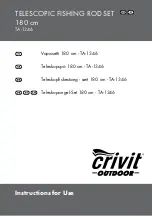
Cooling system cap pressure
test ranges (PSI)
Rated pressure
Pressure test range
4
3-5
7
6-8
10
9-11
13 or 14
12-16
15 or 16
14-18
18
16-20
20
18-22
30
28-30
15
Install pressure pump onto system
adapter using quick-connect. Make sure
quick-connect sleeve snaps forward to
lock connection (
Fig. 10
).
16
Operate pressure pump until needle on
pressure gauge moves to end of colored
band indicating appropriate pressure
range of cap (see
Cooling system cap
pressure test ranges (PSI)
).
17
Watch gauge for short period of time. If
pressure reading drops, leak is present.
18
With system still pressurized, perform
visual inspection of entire cooling system.
Check hoses and connections for seepage
that indicate leak.
19
Return to gauge and check reading.
20
Most leaks are external, and visible
seepage occurs; however, a drop in
pressure with no visible leakage can
indicate a blown head gasket or cracked
block, where fluid leaks into combustion
chamber. Visually inspect oil and
transmission fluid for signs of coolant.
21
When testing is complete, release
pressure in system by pressing pressure
relief valve, located on pump hose near
quick-connect coupler (
Fig. 11
).
22
Repair leaks if necessary, and retest.
23
Disconnect, clean and properly store
components.
24
Refill radiator or coolant bottle to
proper level.
25
Replace cap.
Technical questions
If you have questions, or require technical
service, please contact trained service
technicians at: 1-314-679-4200 ext. 4782.
Visit website www.mityvac.com for new
products, catalogs and instructions for
product use.
Service parts
To order replacement or service parts, visit
www.mityvacparts.com or call toll free
1-800-992-9898.
Fig. 10
Fig. 11
7








































